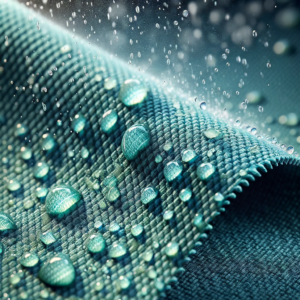Nano Coating for Fabric: Elevating Performance and Protection
Fabric is an integral part of our daily lives, from clothing to upholstery, and it often faces the challenges of stains, water damage, and wear and tear. To address these issues while enhancing the performance and longevity of fabrics, nano coating technology has emerged as a revolutionary solution. In this article, we will explore what nano coating is, how it works, the benefits it offers for various fabric applications, and why it’s a game-changer for textile enthusiasts and everyday consumers alike.
The Science Behind Nano Coating
Nano coating, also known as nanocoating or nanotechnology coating, involves applying a liquid polymer containing nanoparticles to fabric surfaces. These nanoparticles are typically composed of materials like silica or titanium dioxide. When applied, they create an ultra-thin and transparent protective layer that bonds at the nanoscale level.
What sets nano coating apart is its superhydrophobic and oleophobic properties. Superhydrophobic materials repel water, while oleophobic materials repel oil-based substances. For fabrics, this means that nano coatings create a water-repellent and oil-repellent surface, preventing liquids and contaminants from penetrating and staining the fabric fibers.
The Benefits of Nano Coating for Fabric
 Nano coating for fabric offers a wide range of benefits that enhance the performance and longevity of textiles:
Nano coating for fabric offers a wide range of benefits that enhance the performance and longevity of textiles:
- Stain Resistance: Nano coatings prevent common stains from spills, including coffee, wine, and food, keeping fabrics looking fresh and stain-free.
- Water Repellency: Coated fabrics repel water, preventing water damage, and reducing the risk of mold and mildew growth.
- Oil Resistance: Nano coatings protect fabrics from oil-based stains and spills, making them ideal for kitchen aprons and workwear.
- Easy Cleaning: Fabric treated with nano coatings is easier to clean, as liquids bead up and can be wiped away without leaving lasting marks or stains.
- Extended Durability: Coated fabrics are more resilient to wear and tear, reducing the need for frequent replacements.
Applications of Nano Coating for Fabric
The versatility of nano coating makes it suitable for various fabric applications, including but not limited to:
- Clothing: Nano coatings for clothing enhance water and stain resistance, making them ideal for outdoor wear and uniforms.
- Upholstery: Furniture upholstery benefits from nano coatings to protect against spills and stains, extending the life of sofas and chairs.
- Outdoor Textiles: Outdoor fabrics such as tents, sun awnings, and patio cushions can maintain their performance and appearance with nano coatings.
- Sports and Activewear: Sportswear and activewear benefit from enhanced durability and water resistance, improving comfort and longevity.
- Bedding and Linens: Bedding and linens can resist spills and stains, promoting hygiene and prolonging their usefulness.
Caring for Nano-Coated Fabrics
To ensure the longevity and continued effectiveness of nano coatings on fabrics, follow these care and maintenance guidelines:
- Gentle Cleaning: Use mild detergents and follow the manufacturer’s care instructions when cleaning coated fabrics, avoiding harsh chemicals and high heat.
- Regular Maintenance: Depending on usage and exposure, consider periodic reapplication of the nano coating to refresh its protective properties.
- Prompt Stain Removal: Address spills promptly by blotting liquids gently without rubbing to prevent them from settling into the fabric.
In conclusion, nano coating for fabric represents a significant advancement in textile protection and performance. Whether you’re looking to protect your favorite clothing, upholstery, or outdoor textiles, nano coatings offer a transformative solution. With proper care and maintenance, your fabrics can continue to perform and look their best, even in the face of everyday challenges.
Have any questions or share your expertise for Fabric Coatings
Join the conversation!



Plaats een Reactie
Meepraten?Draag gerust bij!